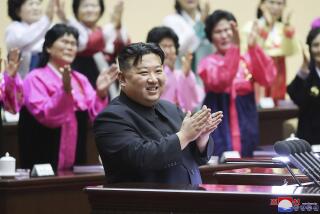Gates quietly draws more allied troops for Afghanistan effort
In many ways, it was a familiar scene: Defense Secretary Robert M. Gates, in Europe, meeting with U.S. allies about the war in Afghanistan.
But something was missing. Gates, during a weeklong tour, did not plead with his European counterparts to send more troops.
The shift in Gates’ approach reflects both the significant growth in U.S. and allied troop levels in the last year as well as the changing strategy of the American-led effort.
Rather than twisting arms for more forces, Gates’ mission has become more subtle, aimed at fine-tuning the mix of allied troops and emphasizing the need for trainers to upgrade Afghanistan’s security forces.
With the troop deployment approved in December by President Obama, the number of U.S. troops will rise to nearly 100,000 this year. In addition, there are nearly 40,000 allied troops.
U.S. officials said allies have committed nearly 10,000 additional forces since the Obama administration’s strategy review last year. Gates said Sunday in Italy that it’s important to include as many trainers and mentors as possible.
France’s announcement last week that it would provide approximately 80 more trainers was seen by some as a snub to the U.S. The Italians, by contrast, had announced earlier that they would boost their force by 1,000.
But French Defense Minister Herve Morin defended his country’s contributions Monday in a joint appearance with Gates. “We’ve added 1,300 soldiers in less than two years,” Morin said.
Under President George W. Bush, Gates appealed publicly for Europeans to set aside their resentment of the U.S. administration and to increase their contribution, then at 17,000 troops. Now allies have deployed or pledged nearly 50,000.
Gates said that earlier he had pressed allies publicly, only to be accused of “megaphone diplomacy.”
“So I decided to be quiet,” Gates said. “And the results speak for themselves. “
More to Read
Start your day right
Sign up for Essential California for news, features and recommendations from the L.A. Times and beyond in your inbox six days a week.
You may occasionally receive promotional content from the Los Angeles Times.





